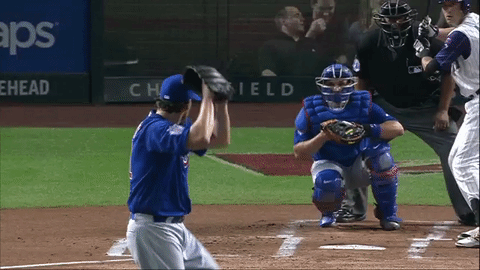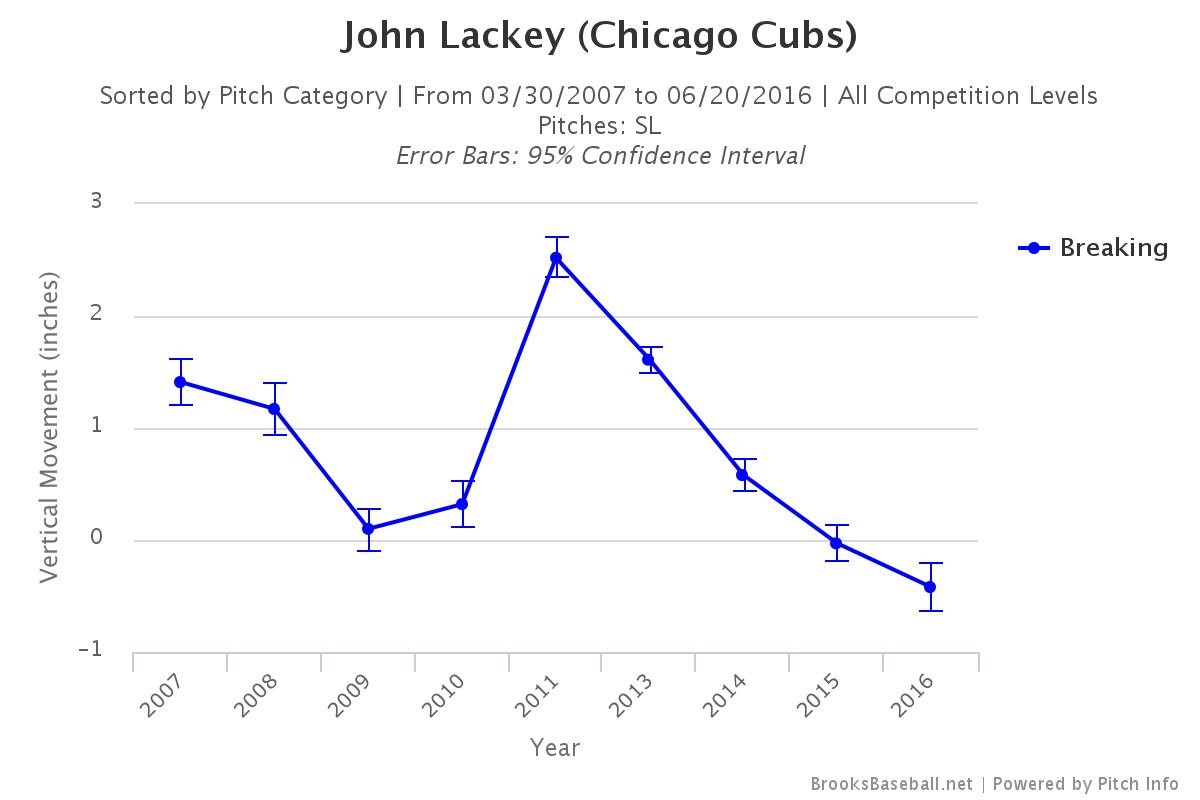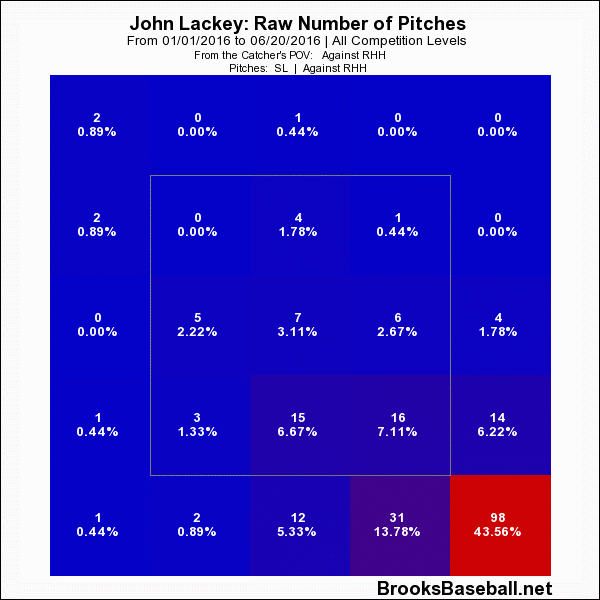The MLB draft has passed but its impact will last. Some selections will go down as busts (e.g. Matt Anderson by the Tigers in 1997). Others will be real bargains such as Carlos Beltran with the 49th pick in 1995. I decided to look at the numbers in an attempt to answer the following questions I read over the last few weeks:
- How many Round 1 picks do end up in the big leagues? What’s the average impact of a Round 1 pick? How does that compare to Round 2? Are there differences between pitcher and batters?
- What has been the best draft class for the 1993-2008 period? (per three first rounds)
- What teams have done a better job?
- What is the best round (top 10 overall picks)?
As I usually do, let’s define the data sources and assumptions. First, my data source is Baseball-Reference. There are many assumptions and disclaimers in this process, but the most important ones are:
- I am using data from 1993 to 2008 to give ample time for players to reach MLB. As I am using career WAR, I don’t want to over-penalize players that have been selected in the recent years and therefore have not accumulated MLB service time.
- Organizations change and so do their ways of conducting business, which evidently includes draft strategy. We are looking at teams rather than specific front offices or general managers.
- WAR refers to Baseball-Reference WAR (i.e. bWAR).
- Teams may have more than one pick per round due to compensation and supplemental picks.
- This methodology does not take into account the overall quality of the draft pool i.e. total WAR per draft year is not constant.
- All WAR is allocated to the team that drafts the player. Understandably, that is not true but let’s toy with the idea through this post.
Let’s get to it.
Question 1 – How many Round 1 picks do end up in the big league? What’s the average impact of a Round 1 compare to a Round 2 pick? Are there differences between pitcher and batters?
The table below outlines how many players have been/were called up to the majors and how many actually have had a positive career WAR i.e. over 0.0. I have also added the average career WAR per player and I have broken down the data by round and by position (pitcher and batter) to grasp the differences easily. Just take a moment with this table:
| Round |
Pos |
Total players |
Players that reached MLB |
% of Total players |
Positive WAR |
% of players who reached MLB |
Average WAR per player |
| Round 1 |
|
|
|
|
|
|
|
|
Pitchers |
372 |
242 |
65% |
161 |
67% |
9.7 |
|
Batters |
320 |
225 |
70% |
157 |
70% |
14.4 |
|
Sub-Total |
692 |
467 |
67% |
318 |
68% |
12.1 |
| Round 2 |
|
|
|
|
|
|
|
|
Pitchers |
247 |
121 |
49% |
60 |
50% |
8.1 |
|
Batters |
244 |
127 |
52% |
70 |
55% |
13.1 |
|
Sub-Total |
491 |
248 |
51% |
130 |
52% |
10.8 |
| Round 3 |
|
|
|
|
|
|
|
|
Pitchers |
244 |
99 |
41% |
59 |
60% |
5.5 |
|
Batters |
235 |
88 |
37% |
50 |
57% |
7.3 |
|
Sub-Total |
479 |
187 |
39% |
109 |
58% |
6.3 |
| Total |
|
1662 |
902 |
54% |
557 |
62% |
10.6 |
Three things come to my mind:
First, this provides some empirical validation of what we intuitively thought: First-round picks produce greater WAR values than the others. While I only have data for the first three rounds, it’s worth noting that the gap between Round 1 to Round 2 (10%) is smaller than from Round 2 to Round 3 (41%).
Second, I actually found surprising that 67% of first-rounders reached MLB at some point. That is two players out of three and it’s a testament to how important raw skills are when it comes to moving up through the minors.
Lastly, the answer to the question of whether t draft pitchers or batters looks like an easy one. Batters not only reached MLB at a higher pace but delivered better results as a group and as individuals. While these results are not statistically significant, they provide a pragmatic answer to the question and suggest a sound strategy might be to draft batters and trade for pitchers later down the road.
Question 2 – What has been the best draft class for the 1993-2008 period?
This table should provide guidance on how to answer this question but does not fully explain it. If we think of it as the number of players that got to MLB, then 2008 is the best year. That year highlights Eric Hosmer, Buster Posey, Brett Lawrie, Craig Kimbrel and Gerrit Cole as the most prominent stars, but offers a very low career total WAR as most of its players are still playing – they’re the youngest generation of my sample. In this class, 27 out of the top 30 picks have reached MLB, though a few for a very short stint e.g. Kyle Skipworth or Ethan Martin.
| Year |
Total war |
Total players that reached MLB |
Average WAR per player |
| 1993 |
476.3 |
54 |
8.82 |
| 1994 |
243.4 |
54 |
4.51 |
| 1995 |
484.9 |
41 |
11.83 |
| 1996 |
280.0 |
45 |
6.22 |
| 1997 |
409.5 |
59 |
6.94 |
| 1998 |
397.6 |
53 |
7.50 |
| 1999 |
402.1 |
52 |
7.73 |
| 2000 |
236.8 |
47 |
5.04 |
| 2001 |
350.9 |
55 |
6.38 |
| 2002 |
508.1 |
54 |
9.41 |
| 2003 |
297.1 |
60 |
4.95 |
| 2004 |
393.2 |
63 |
6.24 |
| 2005 |
458.1 |
63 |
7.27 |
| 2006 |
282.7 |
62 |
4.56 |
| 2007 |
325.4 |
69 |
4.72 |
| 2008 |
213.2 |
71 |
3.00 |
If we think of the highest total career WAR, then the winner is 2002. This class is led by two of the best picks on the sample (Zack Greinke and Joey Votto) but also features Prince Fielder, Jon Lester and Curtis Granderson. If we think of highest concentration of skills, then the 1995 class has to be the first one with an average of 11.8 WAR per MLB player. On the other hand, only 41 players got the MLB call, the lowest among the sample. While Carlos Beltran and Roy Halladay are the most notable names in that draft, player such as Darin Erstad, Kerry Wood, Randy Winn and Bronson Arroyo enjoyed nice peaks.
Question 3 – What teams have done a better job?
Evidently, not every team has selected in the same combination of draft slots e.g. some teams have had the opportunity to choose top picks (Rays, for example), while other have frequently picked from mid-bottom draft slots (Yankees). It would not be fair to compare total career WAR for players the Yankees has selected against those that the Rays has because the latter had more options and access to a different pool of players than that the Yankees had. How to fix that? I am comparing what each team did on the overall pick they were slotted. If we use 2016 as an example, I would be comparing how good Philadelphia was in choosing Mickey Moniak as pick 1 against the average of all other first picks in the timeframe (1993-2008). Once I know the WAR gap between a particular team and the average WAR per pick, I need to standardize that number by the standard deviation i.e. calculating Z scores. In simple terms, this is understanding how good or bad a pick was in relation to the entire distribution of a particular draft slot. The Z-score number allows us to compare how good a 14th pick was in relation to a third pick, for example. Finally, to identify which teams have fared better, I am calculating the average of Z-scores for all picks.
Again, there are many caveats here, but this should give us a ballpark estimate on how well teams have drafted from 1993-2008. Keep in mind, this methodology does not produce a linear WAR per draft slot. That would mean, for example, that overall pick 4 will produce greater WAR than pick 5. On average, the 4th pick has produced 6.2 WAR on average, while the 5th one has produced 14.3. While this might be counter-intuitive (it is at least for me), the empirical evidence of this sample size shows that.
|
Batter |
Pitcher |
|
|
| Teams |
# of batters drafted |
Average of OvPck – Zscore |
# Pitchers drafted |
Average of OvPck – Zscore |
Total Count of Name |
Total Average of OvPck – Zscore |
| Phillies |
26 |
-0.81 |
24 |
-0.46 |
50 |
-0.64 |
| Nationals |
9 |
-0.70 |
6 |
-1.14 |
15 |
-0.88 |
| Athletics |
40 |
-0.99 |
30 |
-0.75 |
70 |
-0.89 |
| Twins |
34 |
-0.57 |
32 |
-1.31 |
66 |
-0.93 |
| Diamondbacks |
18 |
-0.84 |
26 |
-1.06 |
44 |
-0.97 |
| Angels |
18 |
-1.10 |
27 |
-0.88 |
45 |
-0.97 |
| Rays |
14 |
-0.50 |
20 |
-1.31 |
34 |
-0.97 |
| Rangers |
26 |
-1.06 |
28 |
-1.05 |
54 |
-1.06 |
| Cardinals |
28 |
-1.03 |
34 |
-1.25 |
62 |
-1.15 |
| Giants |
34 |
-1.23 |
28 |
-1.10 |
62 |
-1.17 |
| Braves |
32 |
-1.24 |
35 |
-1.12 |
67 |
-1.18 |
| Royals |
25 |
-1.40 |
32 |
-1.04 |
57 |
-1.20 |
| White Sox |
24 |
-0.65 |
40 |
-1.54 |
64 |
-1.20 |
| Reds |
28 |
-0.73 |
27 |
-1.70 |
55 |
-1.21 |
| Blue Jays |
32 |
-1.46 |
27 |
-0.91 |
59 |
-1.21 |
| Red Sox |
29 |
-1.33 |
35 |
-1.14 |
64 |
-1.23 |
| Brewers |
26 |
-0.87 |
27 |
-1.72 |
53 |
-1.30 |
| Dodgers |
21 |
-1.13 |
32 |
-1.44 |
53 |
-1.32 |
| Rockies |
18 |
-0.85 |
33 |
-1.60 |
51 |
-1.33 |
| Pirates |
27 |
-1.72 |
23 |
-0.88 |
50 |
-1.33 |
| Mariners |
25 |
-1.33 |
20 |
-1.45 |
45 |
-1.38 |
| Mets |
17 |
-1.14 |
35 |
-1.61 |
52 |
-1.45 |
| Tigers |
20 |
-0.81 |
32 |
-1.88 |
52 |
-1.46 |
| Orioles |
28 |
-1.05 |
28 |
-1.88 |
56 |
-1.46 |
| Padres |
40 |
-1.47 |
24 |
-1.54 |
64 |
-1.49 |
| Marlins |
30 |
-1.59 |
23 |
-1.41 |
53 |
-1.51 |
| Astros |
23 |
-1.45 |
26 |
-1.61 |
49 |
-1.53 |
| Expos |
26 |
-1.30 |
22 |
-1.85 |
48 |
-1.56 |
| Yankees |
24 |
-1.94 |
29 |
-1.37 |
53 |
-1.63 |
| Cubs |
24 |
-1.46 |
29 |
-1.95 |
53 |
-1.73 |
| Indians |
33 |
-2.13 |
29 |
-1.49 |
62 |
-1.83 |
| Total |
799 |
-1.19 |
863 |
-1.35 |
1662 |
-1.27 |
Perhaps surprisingly, the Phillies come at the top of the list. The Phillies advantage came in three picks: First, Chase Utley was drafted in 2000 with the high 15th pick and has had a great career that is up to 63.4 WAR. Second, in 1993, the Phillies chose Scott Rolen (70 career WAR) with the 46th overall pick – which seems like a bargain now. Finally, Randy Wolf in 1997 was selected in the 54th position and went on to have a 23.1 career WAR. The Nationals have had very much success on their first few years as a franchise with both Jordan Zimmermann and Ryan Zimmerman. The sample size does not include Bryce Harper or Stephen Strasburg, which may push the Nats to the top of the list in the near future.
Astros, Expos, Yankees, Cubs and Indians are the bottom five teams. Coincidentally or not, these teams have long droughts (Yankees exempted). Interesting to see if there is a relationship between draft performance and wins but I guess that’s is another post.
We could go and dig deeper for each team into what they’ve done well and not so much but that would not make sense. Teams make mistakes and it looks like the draft selection is pretty damn hard with an extremely high WAR standard deviation (11.6 WAR through the first 30 picks).
Question 4 – What is the best round (top 10 overall picks)?
This question is about finding the best selection on each of the first 10 picks. I’ve used the Z-score which pick was really ahead of the curve.
| OvPck |
Year |
Tm |
Player |
Pos |
WAR |
Average WAR of pick |
OvPck – Zscore |
| 1 |
1993 |
Mariners |
Alex Rodriguez |
SS |
118.8 |
22.73 |
3.16 |
| 2 |
1997 |
Phillies |
J.D. Drew |
OF |
44.9 |
16.23 |
1.88 |
| 3 |
2006 |
Rays |
Evan Longoria |
3B |
43.3 |
9.00 |
2.46 |
| 4 |
2005 |
Nationals |
Ryan Zimmerman |
3B |
34.8 |
6.21 |
2.67 |
| 5 |
2001 |
Rangers |
Mark Teixeira |
3B |
52.2 |
14.26 |
2.02 |
| 6 |
2002 |
Royals |
Zack Greinke |
SP |
52.3 |
4.76 |
3.63 |
| 7 |
2006 |
Dodgers |
Clayton Kershaw |
SP |
52.1 |
11.86 |
2.42 |
| 8 |
1995 |
Rockies |
Todd Helton |
1B |
61.2 |
6.41 |
3.56 |
| 9 |
1999 |
Athletics |
Barry Zito |
SP |
32.6 |
8.70 |
2.24 |
| 10 |
1996 |
Athletics |
Eric Chavez |
3B |
37.4 |
11.31 |
2.04 |
Well, this is quite a nice group of players. A-Rod is the WAR leader of our sample. Even as a first pick, which on average has yielded the highest WAR, he manages to be three standards deviations above the mean. Five other players are active and two of them (Greinke and Kershaw) still are among the best starting pitchers in the game. They will continue to cement their position as great draft picks for the Royals and Dodgers. Interestingly enough, Barry Zito and Eric Chavez were part of the A’s Moneyball team that frequently over-performed a few years ago — a reminder of how important it is to build a strong core of players.
As a bonus question – these are the top 10 picks, according to this methodology:
| Year |
OvPck |
Tm |
Player |
Pos |
WAR |
Drafted Out of |
OvPck – Zscore |
| 2002 |
44 |
Reds |
Joey Votto |
C |
42.7 |
Richview Collegiate Institute (Toronto ON) |
3.74 |
| 2007 |
34 |
Reds |
Todd Frazier |
3B |
16.8 |
Rutgers the State University of New Jersey (New Brunswick NJ) |
3.71 |
| 1997 |
70 |
Rockies |
Aaron Cook |
RHP |
15.9 |
Hamilton HS (Hamilton OH) |
3.71 |
| 1995 |
69 |
Pirates |
Bronson Arroyo |
RHP |
26.5 |
Hernando HS (Brooksville FL) |
3.67 |
| 1995 |
53 |
Indians |
Sean Casey |
1B |
16.3 |
University of Richmond (Richmond VA) |
3.67 |
| 2007 |
27 |
Tigers |
Rick Porcello |
RHP |
12.2 |
Seton Hall Preparatory School (West Orange NJ) |
3.63 |
| 2002 |
6 |
Royals |
Zack Greinke |
RHP |
52.3 |
Apopka HS (Apopka FL) |
3.63 |
| 1996 |
18 |
Rangers |
R.A. Dickey |
RHP |
21.1 |
University of Tennessee (Knoxville TN) |
3.61 |
| 1997 |
91 |
Royals |
Jeremy Affeldt |
LHP |
10.5 |
Northwest Christian HS (Spokane WA) |
3.61 |
| 1995 |
31 |
Angels |
Jarrod Washburn |
LHP |
28.5 |
University of Wisconsin at Oshkosh (Oshkosh WI) |
3.60 |
| 1998 |
33 |
Expos |
Brad Wilkerson |
OF |
11 |
University of Florida (Gainesville FL) |
3.60 |
| 1995 |
49 |
Royals |
Carlos Beltran |
OF |
68.8 |
Fernando Callejo HS (Manati PR) |
3.59 |
As always, feel free to share your thoughts and comments in the section below or through our twitter account @imperfectgameb.
Note: This analysis is also featured in our emerging blog www.theimperfectgame.com











